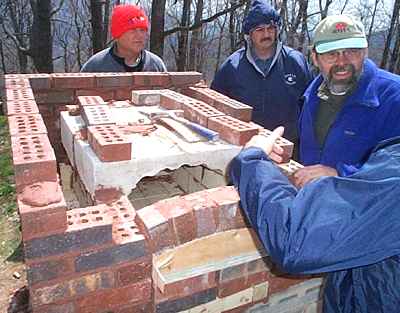(...new here)
I thought I'd bump this thread since I'm in the research phase on building my own pizza oven. My goals are to build an oven specifically for pizza (and if I can bake a few loaves of bread afterwards -- bonus!)
The Pompeii page on this site asserts that this oven heats up quicker than a barrel vault oven. Is this really true? I can see that this is true for an Alan Scott oven with the thick thermal mass. Can you not build a well-insulated barrel vaulted oven with less mass (or no mass) which will heat up just as fast?
I'm currently leaning towards a rectangular oven with walls and floor of regular firebrick. The vault will be cast refractory done in sections. For insulation I'm thinking of using dense mineral wool (maybe 5" thick?). The outside may be clad with cement board on steel studs. Then stucco for the final surface.
Here is a reference:

Looking for feedback,
-fernando






Leave a comment: